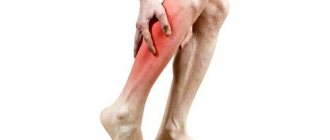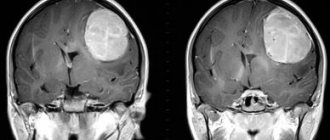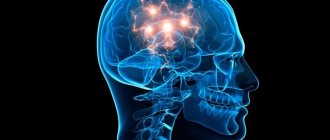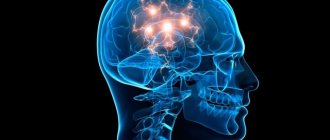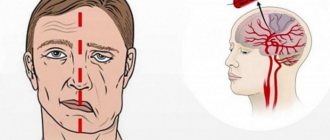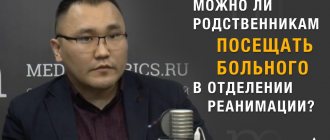To begin with, let's divide all seizures into generalized, when the whole body is subject to a convulsive attack, and local, when only one area is affected - for example, the calf muscle.
There are also tonic and clonic seizures. The first ones are more like not a cramp, but a spasm, in which the body seems to be frozen in one position. A classic example of a tonic seizure is opisthotonus in tetanus. Such seizures are rare and are always caused by a serious illness: tetanus, neuroinfection, brain tumors.
The second option is clonic convulsions, in which the body makes frequent chaotic movements, that is, it beats in a typical convulsive seizure, as most of us imagine it.
This option can be encountered much more often in life - these include febrile convulsions when the temperature rises in young children, and epileptic seizures in people of any age. If your leg is cramped or your biceps is constantly twitching, this is unpleasant, but not dangerous.
If we are talking about generalized seizures, a person needs quick medical attention. Although neurologists like to repeat that a seizure is not as terrible as it looks from the outside.
Febrile seizures
The content of the article
This is a fairly common occurrence when it comes to children under 6 years of age. It is believed that every tenth child responds to a rise in temperature at least once in his life with a generalized convulsive seizure.
Typically the temperature is required to rise above 38.5 degrees. Then, in the still imperfect child’s brain, foci of pathological excitation arise, triggering many false signals to the muscles.
It looks scary, but in reality everything is not so dangerous: usually the seizure goes away within 2-3 minutes, but it can last 15, after which it ends as suddenly as it began.
And what is important - without causing any harm to the baby. Only seizures lasting more than half an hour require hospitalization and observation. You should also call a doctor if a child over 6 years of age, a teenager, or an adult develops seizures in response to a fever.
What to do? The only way you can and should help a child is to be close to him and make sure he doesn’t get hurt. Just in case, be prepared to turn your head to the side if vomiting begins. Forget about sticking spoons in your mouth.
In attempts to unclench your teeth and pull your tongue out of your mouth, you will only injure yourself and the child. Epilepsy subsequently develops in only 3% of children who have had febrile seizures, but it is still worth doing an electroencephalogram after recovery.
Febrile seizures - symptoms and treatment
Febrile seizures are benign conditions in which high body temperature (38°C or higher) changes the electrical activity of neurons in the brain, leading to seizures.
Previously, the term "febrile seizures" was used. However, over time it was replaced by “febrile seizures”, since the concept of “seizures” is much broader and not all seizures manifest themselves as convulsions [1].
Febrile seizures are not associated with infectious lesions of the central nervous system (meningitis, encephalitis, etc.). This is one of the conditions with epileptic seizures that do not require a diagnosis of epilepsy.
Such attacks usually occur in children of infant, early and preschool age: from 6 months of life to 5 years, some sources indicate an age of up to 6 years [9]. In fact, febrile seizures can develop between the ages of 1 month and 8 years. Externally, the clinical picture looks severe: the child loses consciousness, he experiences tonic (in the form of tension) and/or clonic (in the form of twitching) motor phenomena. Despite this, in general this condition has a favorable prognosis.
Convulsions due to febrile fever in children occur quite often: in approximately one child out of 30 under the age of 6 years. And a repeated attack occurs on average in one out of three children [13]. The number of attacks increases in November-January and June-August, this is associated with the highest prevalence of respiratory and gastrointestinal infections, respectively [8].
True febrile seizures should be distinguished from febrile-provoked seizures observed in some forms of epilepsy [14]. In our country, febrile seizures are the responsibility of neurologists, but in most other countries of the world such conditions are included in the range of activities of pediatricians [7].
In the USA and European countries, the average prevalence of febrile seizures among children is currently 2-4% [13][20]. In Russia, no similar epidemiological studies have been conducted in recent years, but there is no reason to believe that the incidence of this pathology in the Russian Federation is in any way different from the average European one.
Causes
Febrile seizures are a multifactorial condition, meaning many factors can contribute to their development. As a rule, their occurrence is characterized by a combination of genetic predisposition and an infectious agent that causes fever [7]. Febrile seizures are associated with a decrease in the seizure threshold and the body's tendency to develop a high temperature in response to infection [22].
A genetic predisposition is implied due to the prevalence of familial cases of febrile seizures. However, the exact type of inheritance has not yet been established [2]. Several genes have been discovered whose mutations can contribute to the development of febrile seizures, but in clinical practice these mutations are not detected due to their favorable prognosis [7].
Genetic predisposition to febrile seizures varies with age. Before reaching 5-6 months, seizures are rare; in 85% of children they occur before four years of age, on average at the age of 17-23 months. When febrile seizures develop in children under 6 months of age, it is important to exclude neuroinfection in order to avoid diagnostic errors.
The cause of febrile attacks is fever - an increase in temperature to 38 ° C or higher. It should be noted that high temperature can be detected only after the end of the attack [3][5].
Fever can be caused by any infectious disease. Up to 30% of cases of seizures in children of the first year of life are observed against the background of infections caused by human herpes virus type 6. In this case, there is a high probability that the virus will enter the bloodstream and spread throughout the body [7].
Quite often, an increase in temperature to febrile levels is not associated with an infectious process. Non-infectious causes include teething, the effects of drugs or toxic substances, diseases of endocrine, psychogenic, reflex or central origin [16].
Local tonic convulsions
Muscle spasm in response to excessive physical activity or prolonged uncomfortable position is a common phenomenon. Professional athletes know this more than others, but even for ordinary fitness enthusiasts, sudden muscle pain causes many unpleasant emotions.
A cramped muscle is tense and hard to the touch, and the spasm is accompanied by severe pain. In addition to the calf muscles, convulsive spasms affect the muscles of the neck, and sometimes the muscles of the thigh and forearm can be affected. Usually, local tonic convulsions go away on their own within 5-10 minutes, but it’s still better not to endure the pain.
There is a simple scheme of actions that will help return the muscle to its normal state.
What to do? The most basic cause of spasm is a lack of microelements (primarily magnesium), excessive stress on an insufficiently warmed muscle, or prolonged stay in an uncomfortable position (this is what causes muscle spasms during sleep).
Therefore, people involved in physical exercise are recommended to take additional vitamin and mineral complexes, eat dried apricots before training, avoid dehydration, and most importantly, devote enough time and effort to warming up to “warm up” the muscles.
If a spasm does occur, there are techniques for local impact on the muscle. For example, if you have a spasm in the calf muscles, you need to stretch your leg forward as much as possible and strongly pull your foot towards you.
Convulsions
Cold
Iron deficiency
Encephalitis
Rheumatism
12793 21 August
IMPORTANT!
The information in this section cannot be used for self-diagnosis and self-treatment.
In case of pain or other exacerbation of the disease, diagnostic tests should be prescribed only by the attending physician. To make a diagnosis and properly prescribe treatment, you should contact your doctor. Cramps are involuntary muscle contractions of a paroxysmal nature.
Almost every person has experienced a single attack of seizures at least once in their life. Most often, this is a sudden painful contraction (spasm) of the muscles lasting from a few seconds to several minutes.
In most cases, a single episode of seizures goes away without consequences or special treatment. But if these episodes recur frequently, you should see a doctor, as this may indicate serious health problems.
The most common cramps are the calf and thigh muscles, as well as the muscles of the feet and hands. Also quite common are spasms of the facial muscles, neck, larynx, and respiratory muscles (convulsive activity in them leads to stuttering).
Types of seizures
There are several types of seizures, classifying them according to different criteria.
The nature:
- tonic
– strong muscle tension, causing you to “freeze” in an unnatural position; - clonic
– rhythmic twitching of a muscle/muscles. Various tics, as well as stuttering (convulsions of the respiratory muscles, larynx) belong specifically to the clonic type; - tonic-clonic
and
clonic-tonic
- characteristic of epilepsy, when during an attack the tonic and clonic phases replace each other.
By prevalence:
- local (focal)
cramps - contraction of individual muscles or muscle groups; - generalized
cramps - contractile activity involves several muscle groups.
According to the development mechanism:
- a convulsive reaction
occurs in response to a deficiency of microelements, infection, insufficient blood supply, intoxication, staying in a stuffy room, etc.; - convulsive syndrome
develops, as a rule, with diseases of the nervous system, which can be identified by studying the electrical activity of the brain; - epilepsy
is a disease characterized by repeated, often generalized (covering the whole body) seizures.
Possible causes of cramps
Muscle cramps can occur as a result of various conditions, such as:
- excessive intake of alcohol, medications (diuretics, antidepressants, etc.), caffeine, nicotine;
- increase in body temperature above 38.5° C – so-called. low-grade seizures, common mainly in young children (up to four years);
- brain tumors and other changes in its structure;
- deterioration of cerebral circulation, traumatic brain injury;
- increased blood pressure and blood glucose levels;
- severe dehydration of the body;
- violation of water-salt metabolism, deficiency of microelements;
- severe overwork, lack of sleep, prolonged psychological stress;
- excessive physical activity or muscle strain;
- pinched nerves;
- intoxication;
- infections;
- hypothermia or overheating;
- anemia (decreased hemoglobin concentration in the blood);
- genetic predisposition to increased seizure activity.
What diseases cause seizures?
Most (up to 90%) seizures occur once and remain in the memory as an unpleasant incident. But if they happen over and over again, most likely, this is the body’s way of signaling about some serious violations. Harmless blepharospasm (tremor of the eyelid) may indicate the development of dangerous dry eye syndrome or even glaucoma (increased intraocular pressure). Clonic convulsions of the hands – about the development of Parkinson’s disease, etc.
Identifying these problems as early as possible and starting timely treatment means prolonging the period of active life, preventing a decrease in its quality and disability.
Convulsions of the same form can occur in various diseases of the nervous system, such as meningitis, encephalitis, brain tumors, aneurysms (protrusion of the wall) of brain vessels, intracerebral hemorrhages, etc. Also, convulsions are often an early symptom of hereditary degenerative diseases of the nervous system, as well as progressive senile dementia.
Often, seizures accompany diseases of the cardiovascular system, autoimmune diseases, such as systemic lupus erythematosus, rheumatism, etc.
Convulsions caused by impaired brain functioning develop during hypo- and hyperglycemic coma, as well as hepatic coma.
Convulsions in young children, not associated with an increase in body temperature, can be a symptom of a malformation of the brain and cardiovascular system, or hereditary diseases.
Which doctors should I contact?
If seizures do not occur for the first time, you must inform your doctor about them:
- or a general practitioner (family doctor);
- ;
- ;
- an ophthalmologist (if you suffer from eyelid tremor);
- or a phlebologist (if the main complaints are cramps of the calf and thigh muscles).
Diagnostics and examinations
Determining the causes of recurring seizures includes examination, history taking, instrumental and laboratory research methods. The doctor will most likely prescribe laboratory tests such as general and biochemical blood tests, analysis of microelements (calcium, potassium, magnesium, iron, blood glucose and glycated hemoglobin.
Local clonic seizures
The reasons for periodic twitching of a particular muscle may be the most unexpected. For example, strong emotional experiences, stress, due to which excitation in our body begins to prevail over inhibition, various neuroses arise.
Or heredity, due to which we inherited easily excitable muscles. If your grandmother or mother often complained of local convulsions, this is from them. An unhealthy diet lacking essential micronutrients (crash diet) can also cause these symptoms. On the one hand, they do not cause serious concern, but they are not easy to get rid of.
What to do? The problem of muscle fasciculations becomes significant for the doctor and the patient when twitching occurs too often and really interferes with life. In this case, you should contact a neurologist. The course of treatment may take some time and include taking vitamins and minerals, medications that affect the nervous system (including sleeping pills and antidepressants), physiotherapy and massage.
Epileptic seizure
A seizure in epilepsy, or, as it is also called, status epilepticus, is perhaps the most striking example of what the average person imagines when they mention seizures.
The man suddenly pushes, his body contracts chaotically, incoherent wheezing is heard, foam comes out of the mouth. The picture is terrible, and the situation requires quick medical intervention. Surprisingly, just one intravenous injection quickly brings a person back to life.
What to do? The main task of a witness of status epilepticus is to ensure the safety of the unfortunate person so that he does not accidentally injure himself on surrounding objects. If possible, it is recommended to lay him on a soft surface and turn his head to the side so that vomit and foam do not enter the respiratory tract. Call an ambulance as quickly as possible.
If an attack occurs for the first time, it is very important to undergo a full examination as soon as possible. This may be the onset of one of the neurological diseases or a brain tumor.
ONLINE REGISTRATION at the DIANA clinic
You can sign up by calling the toll-free phone number 8-800-707-15-60 or filling out the contact form. In this case, we will contact you ourselves.
If you find an error, please select a piece of text and press Ctrl+Enter
Treatment of seizures
For any seizure, regardless of its severity, you must call an ambulance.
Only an experienced doctor can distinguish a hysterical attack from a true convulsive one. In all other cases, it should be considered as possible epileptic and the patient’s condition should be taken with complete seriousness and responsibility.
First of all, the patient should be protected from injury and damage during a seizure. To do this, place a soft pillow or folded clothing under your head. You also need to place something soft under your feet and hands.
In no case should foreign objects be placed between the patient’s teeth - spoons, forks, etc., since at the time of convulsions they can provoke respiratory arrest or lead to the entry of a foreign body into the respiratory tract (a broken tooth crown, etc.).
If a child has a seizure, then before the ambulance arrives, it is necessary to apply a cold compress to his forehead and in the area of the right hypochondrium. It is also allowed to give the child an antipyretic drug.


